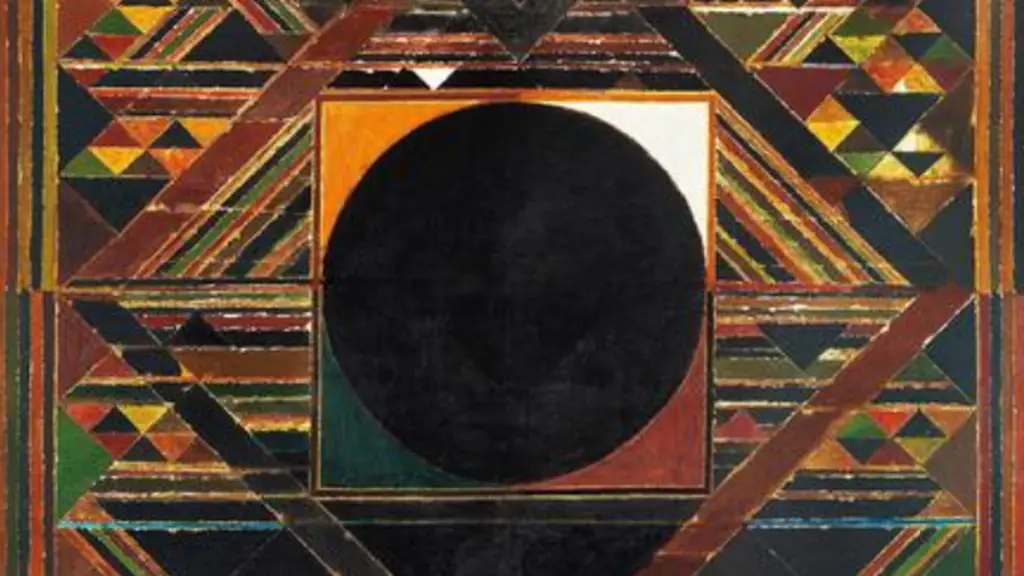S.H. Raza’s Gestation Sells for Record-breaking Price at Auction
Sayed Haider Raza, the renowned Indian Modern artist, has achieved a remarkable feat even seven years after his death. His acrylic on canvas masterpiece, Gestation (1989), recently sold for ₹51.75 crore, making it the most expensive Indian artwork ever to be auctioned. This record-breaking sale surpassed the previous high of ₹32 crore set by Vasudeo S. Gaitonde in 2020.
Gestation is a stunning representation of Raza’s unique style, featuring his signature Bindu motif in rich, earthy tones. The painting was sold at Pundole Auction House on August 31, along with several other notable works. F.N. Souza’s oil painting Hunger fetched ₹34.5 crore, setting a new world auction record for the artist. Additionally, Tyeb Mehta’s bronze sculpture Two Heads achieved a remarkable price of ₹14.95 crore, establishing a world auction record for a Modern Indian sculpture.
Ashvin Rajagopalan, the director of Mumbai’s Piramal Art Foundation and Chennai’s Ashvita’s, commented on Raza’s exceptional achievement at the auction. He noted that Gestation faced no competition from other prominent artists like Gaitonde, Ravi Varma, or Sher-Gil, which would have provided a formidable challenge. Rajagopalan also highlighted the significant impact of the recent exhibitions celebrating the centennial of Raza’s birth. These exhibitions, held at esteemed institutions such as the Kiran Nadar Museum of Art and the Piramal Museum of Art, along with Raza’s first solo exhibition at The Centre Pompidou in Paris, have garnered global visibility and attracted international collectors to acquire his works. Rajagopalan further emphasized that similar momentum is expected for F.N. Souza’s works in 2024, marking the centenary of the artist’s birth.
Gestation holds a special place in Raza’s body of work, particularly from the 1980s, which is considered one of the most crucial decades of his artistic career. The painting exemplifies his mastery of geometric forms, with a focus on earthy tones that resonate with the forests of his hometown in Madhya Pradesh.
Art Appreciation as an Alternate Asset Class
The growing acceptance of art as an alternate asset class has resulted in an expanding buyer base and consistently strong prices for Indian artists across various periods of the 20th century. Khorshed Pundole, co-owner of Pundole Auction House, one of Mumbai’s oldest art auction houses, highlighted the increasing value of artworks with impeccable provenance that enter the market for the first time. Such works command a significant premium due to their historical relevance and scarcity.
The current quarter is poised to be the most lucrative period in the history of Indian art, according to Rajagopalan. Pundole Auction House achieved a sales record of approximately ₹60 crore, while previous auctions by AstaGuru amounted to around the same figure. Saffronart, scheduled for September 16, is projected to generate sales worth ₹125-₹130 crore, and an upcoming Christie’s auction is expected to contribute another ₹60-₹70 crore. These outstanding results can be attributed to several factors, including the robust Indian market that has reached a GDP of $3.75 trillion. This influx of money is seen not as a surprise but as the beginning of a promising movement to support the arts in India, with the potential for billions of rupees to be invested, bought, and directed towards art.
Raza’s Legacy and the Need for a Museum
While Raza is the focal point of many private museums in India, art enthusiasts believe that it is now time for the legendary artist to have a dedicated museum of his own. Ashvin Rajagopalan, who is presently working on a book about Raza, emphasized the need for the government of India and the Ministry of Culture to provide adequate space and support for a Raza museum. As Raza was a meticulous collector and archivist, his vast body of work and extensive records should be accessible for public viewing. Rajagopalan proposed the idea of assembling all the Razas from government collections to create an extraordinary museum dedicated to the artist’s legacy.
Khorshed Pundole also shared insights into the changing dynamics of the art market, with increasing recognition being given to post-independence artists, not just the Progressive Artists Group. Esteemed contemporary artists such as Atul Dodiya, Subodh Gupta, Bharti Kher, Jitish Kallat, and A. Balasubramaniam are expected to attain the same level of critical acclaim as their Modern counterparts.
The spotlight is not limited to established artists, as younger talents are also gaining significant attention from international institutions. Auctioneers are witnessing tremendous interest in the works of artists like Ranjani Shettar (whose exhibition at the Barbican Centre in London is set to open), Lubna Chowdhary, and Rana Begum. These emerging artists are transcending geographical boundaries and avoiding categorization, unlike their predecessors.
The Indian art market is witnessing an unprecedented surge in value and recognition, creating a thriving ecosystem for artists and collectors alike. With continued support and investment, the art scene in India is expected to flourish, contributing to the nation’s cultural and economic growth.


